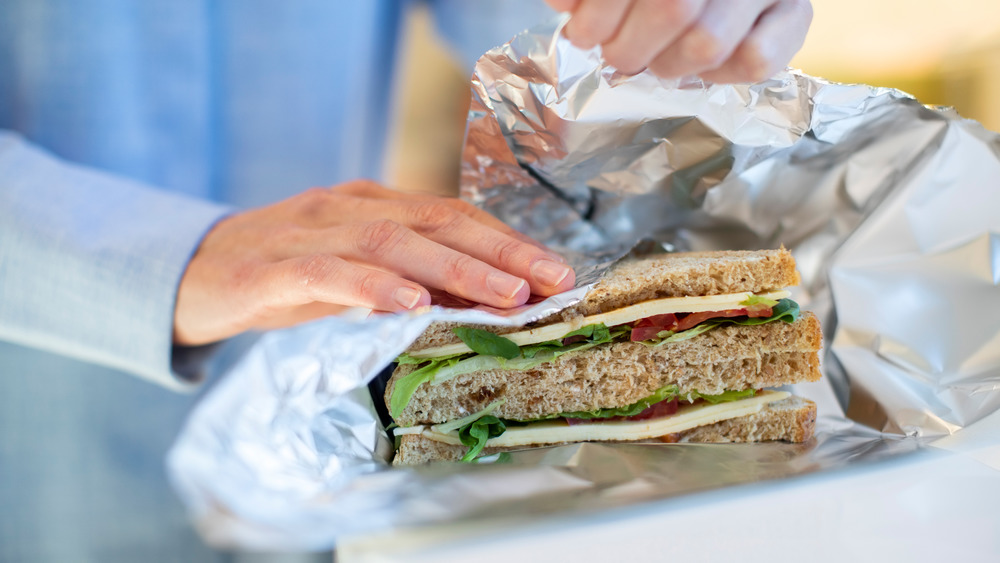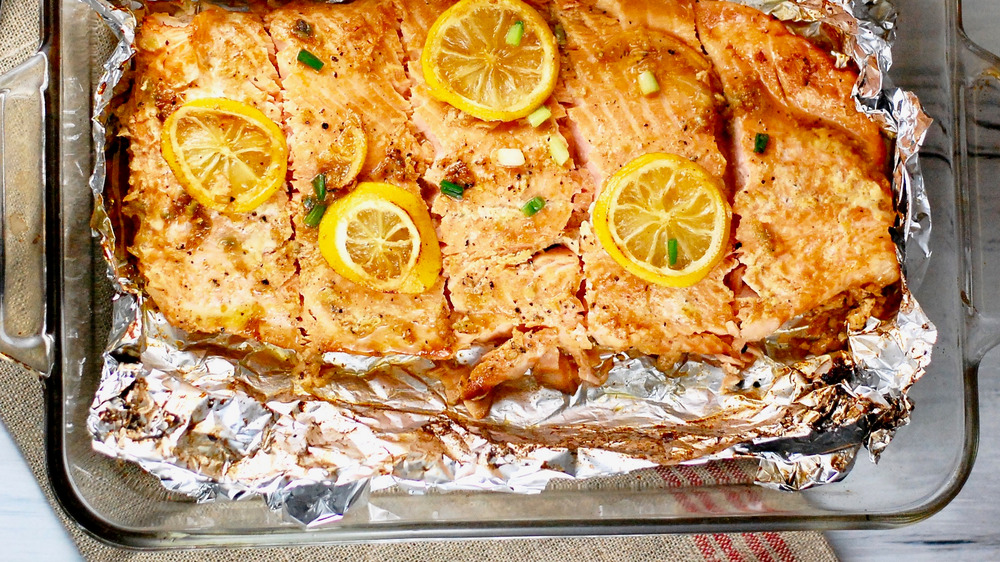Don't Believe This Myth About Aluminum Foil
Pull out a sheet of aluminum foil. Whether you're using it on a sheet pan as you bake up dinner or on the grill, you likely automatically turn that aluminum foil dull side down. After all, the shiny side cooks food the best as it conducts the most heat, right?
While that's what a lot of people think, it's not the case. The shiny side of the aluminum foil working better than the dull side to conduct heat and cook food is a myth, according to Reynolds, the brand behind Reynolds Wrap. If you're using either standard or heavy-duty foil, you can use either side — it's all up to personal preference.
So why does the difference in finish even exist? It all comes down to manufacturing. According to a TODAY interview with a Reynolds rep, "The difference in appearance between dull and shiny is due to the foil manufacturing process. In the final rolling step, two layers of foil are passed through the rolling mill at the same time. The side coming in contact with the mill's highly polished steel rollers becomes shiny. The other side, not coming in contact with the heavy rollers, comes out with a dull or matte finish."
An exception to the aluminum foil rule
Despite the heavy-duty and standard foil offering identical properties whether you use the shiny or the dull side of the foil, there is one instance when you'll want to use a particular side. According to Reynolds, if you're using the brand's non-stick foil, then the non-stick side is indicated by the dull, flat color. Additionally, the non-stick side of the foil is imprinted with the words, "Non-Stick Side," just to eliminate any confusion.
On top of this, a chemistry thread on Stack Exchange points out that there may be another reason to prefer one side of the foil over the other. According to the site, even though both sides share cooking properties, "aluminum foil is actually made of two layers: one of aluminum, another that is coating. The surface of the aluminum layer that is in contact with [the] atmosphere oxidizes and turns into aluminum oxide — hence the matte side. In that case, we should use the shiny side, since aluminum oxide is not that healthy."
While thread users debate whether this is truly a health concern or not, other users point out that the matte side of the foil is likewise more susceptible to corrosion from acid-heavy foods such as tomatoes.

